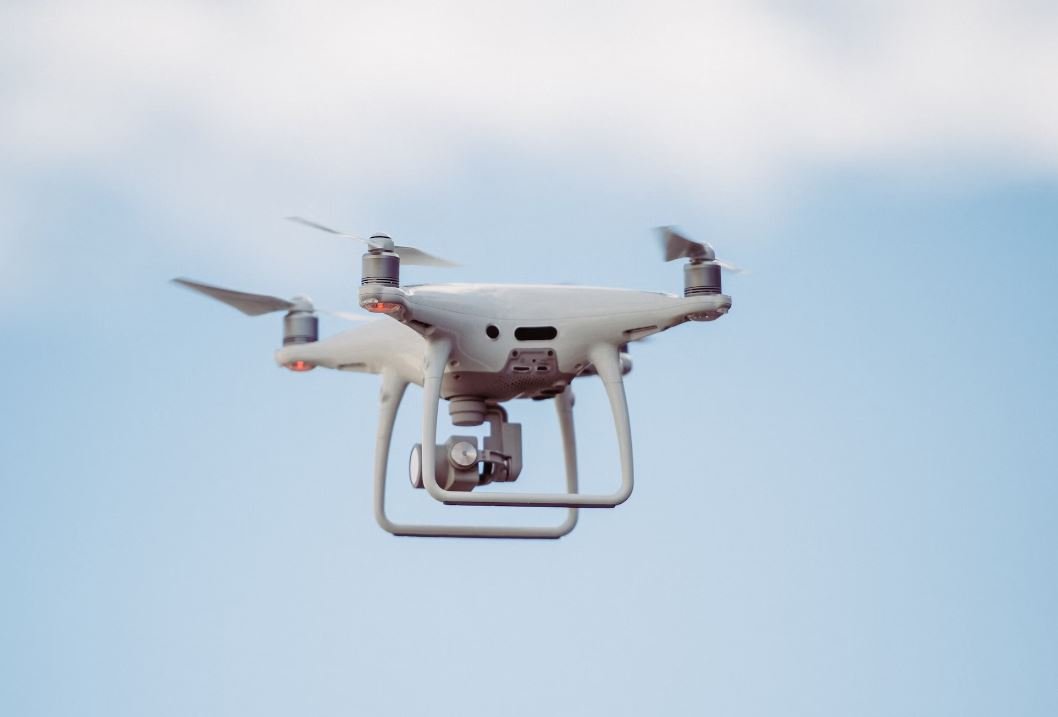Picture Prompts to Describe
Describing pictures is an essential skill that can improve communication and language proficiency. Picture prompts offer a useful tool for practicing and enhancing this skill, whether for language learners or creative writing exercises. In this article, we will explore the benefits of using picture prompts and provide some tips on how to effectively describe images.
Key Takeaways
- Picture prompts improve communication and language proficiency.
- They enhance creativity and imagination.
- Describing pictures can help build vocabulary and descriptive skills.
- Picture prompts are great for language learners and creative writing exercises.
Why Picture Prompts?
Picture prompts serve as visual stimuli that spark creative thinking and encourage detailed descriptions. *Describing images can extend beyond language learning and be a valuable tool for creative writing and brainstorming. The rich visual content stimulates the imagination, allowing for unique interpretations and narratives.
How to Describe Pictures
When describing a picture, it’s important to consider the following steps:
- Observe the picture: Take time to examine the visual details, identifying key elements and noticing any unique features.
- Identify the main subject: Determine what stands out or captures attention in the picture, focusing on the central theme or object.
- Add descriptive details: Expand your description by providing information about colors, shapes, sizes, textures, and any other relevant characteristics or surroundings.
- Use figurative language: Employ similes, metaphors, and other literary devices to add depth and vividness to your description.
- Engage the senses: Describe how the picture appeals to different senses such as sight, sound, smell, taste, and touch.
- Organize your description: Structure your sentences or paragraphs in a logical sequence, considering the overall flow and coherence of the description.
- Provide personal interpretations: Share your own thoughts, feelings, and impressions about the picture, offering a unique perspective.
Using Picture Prompts for Language Learning
For language learners, picture prompts provide a context for practicing vocabulary, grammar, and sentence construction. *By carefully observing and describing pictures, learners can internalize new words and expressions, improving their fluency and accuracy.
Table 1: Vocabulary Enhancement with Picture Prompts
| Language Skill | Benefits |
|---|---|
| Word Recognition | Associating new and familiar words with corresponding images. |
| Word Meaning | Understanding the context and connotation of words through visual cues. |
| Word Usage | Applying words in appropriate sentences for better comprehension. |
Using picture prompts can also foster creativity and encourage learners to think outside the box. *The visual component triggers imagination, allowing learners to generate unique stories, dialogues, or narratives based on the given image.
Table 2: Benefits of Picture Prompts in Language Learning
| Benefits | Explanation |
|---|---|
| Enhanced Imagination | A visual stimulus that sparks creative thinking and story creation. |
| Engaging Speaking Practice | Describing pictures encourages learners to use new vocabulary orally. |
| Grammatical Expansion | Utilizing different grammar structures while describing various elements in the image. |
Picture Prompts for Creative Writing
Picture prompts are not limited to language learning; they are widely used in creative writing exercises to develop storytelling skills and overcome writer’s block. *A single image can inspire an entire narrative, serving as a starting point for character development, plot creation, and descriptive writing.
Table 3: Writing Inspiration from Picture Prompts
| Writing Element | Example |
|---|---|
| Character | Developing a unique personality for a character based on their appearance. |
| Setting | Creating a vivid and realistic setting by describing the image’s environment. |
| Conflict | Establishing a problem or challenge that the characters will face in the story. |
Whether you are learning a language or exploring your creativity, picture prompts offer an interactive and inspiring way to practice description skills. *By utilizing these visual tools, you can enhance your communication abilities, expand your vocabulary, and become a more effective writer.
So, next time you come across an intriguing image, challenge yourself to describe it in detail or transform it into an engaging story. Let your imagination run wild and see where the picture prompts take you!

Common Misconceptions
Paragraph 1
One common misconception about using picture prompts to describe is that it is only suitable for young children or those with limited language skills. This is not true as picture prompts can be helpful for individuals of all ages and language abilities. It serves as a visual aid that can stimulate imagination and creativity, making it a valuable tool for language development.
- Picture prompts can be used by adults to enhance storytelling or public speaking skills.
- Image-based prompts can help individuals express their thoughts and ideas more effectively.
- Pictures can be a helpful resource for learning new vocabulary or understanding complex concepts.
Paragraph 2
Another misconception is that picture prompts are only useful for writing activities. While they are indeed great for enhancing writing skills, they can also be valuable in various other contexts, such as speaking exercises or group discussions. Picture prompts can serve as a starting point for conversations and promote critical thinking.
- Picture prompts can be used in language learning classes to practice speaking and listening skills.
- Discussion-based activities using picture prompts can encourage active participation and improve communication skills.
- Visual prompts can be effective in helping individuals express their opinions and viewpoints in a clear and concise manner.
Paragraph 3
Some people may believe that picture prompts are limited in scope and can only be used for certain subjects or topics. However, picture prompts are versatile and can be adapted to various contexts and subjects, including science, history, and even mathematics. The possibilities are endless.
- Picture prompts can be used to illustrate scientific concepts or processes.
- Historical images can be used to spark discussions and provide context for historical events.
- Visual representations can help individuals understand and solve complex mathematical problems.
Paragraph 4
There is a misconception that picture prompts can stifle creativity and limit individual interpretation. However, picture prompts are meant to inspire and encourage creativity by providing a visual stimulus that sparks imagination. They serve as a catalyst for personal expression rather than imposing limitations.
- Picture prompts can be used as a starting point to create unique and imaginative stories.
- Individuals can interpret picture prompts in different ways, leading to diverse and interesting discussions or writings.
- Visual prompts can inspire artistic endeavors such as drawing or painting.
Paragraph 5
Some people may wrongly assume that picture prompts are easy and require little effort. However, effectively utilizing picture prompts to describe requires critical thinking, observation, and analytical skills. It goes beyond the superficial interpretation of an image.
- Observing details in a picture prompt allows individuals to describe it in a more vivid and engaging manner.
- Analyzing the mood or atmosphere depicted in the image can enhance the overall description or narrative.
- Identifying symbols or hidden meanings in picture prompts adds depth and complexity to the description.

The Importance of Visual Prompts in Describing Pictures
Visual prompts can be a powerful tool in helping individuals provide accurate descriptions of pictures. They serve as a visual aid that triggers memory recall and stimulates the thought process. In this article, we explore ten different examples of visual prompts and their effectiveness in describing various types of pictures.
1. Descriptive Words
By providing a list of descriptive words related to an image, individuals can expand their vocabulary and articulate observations more precisely.
| Image | Descriptive Words |
|---|---|
 |
Peaceful, Serene, Tranquil, Blossoming |
2. Sentence Starters
Using sentence starters enables individuals to structure their thoughts and describe the elements within a picture in a logical manner.
| Image | Sentence Starters |
|---|---|
 |
“In the foreground, there is…” “The colors in this picture remind me of…” |
3. Question Prompts
Asking questions related to an image can encourage individuals to analyze different aspects of the picture and provide more detailed descriptions.
| Image | Question Prompts |
|---|---|
 |
“What emotions does this picture evoke?” “How would you describe the lighting in this image?” |
4. Comparative Frames
Comparing different frames within a picture highlights contrasting elements, enabling individuals to incorporate perspective and detail into their descriptions.
| Image | Comparative Frames |
|---|---|
 |
“In the bottom left corner, there is a gloomy alley, while in the top right, there is a vibrant cityscape.” |
5. Character Profile
Creating a character profile helps individuals to develop a deeper understanding of the people or animals portrayed within the image.
| Image | Character Profile |
|---|---|
 |
Name: Charlie Age: 12 Occupation: Student Characteristics: Curious, Energetic |
6. Setting Details
Focusing on the setting details enables individuals to accurately describe the atmosphere and location of the picture.
| Image | Setting Details |
|---|---|
 |
Location: Countryside Time of Day: Sunset Weather: Clear sky with a slight breeze |
7. Action Steps
Action steps provide individuals with a structured approach to describing pictures, ensuring they cover all the important elements within the image.
| Image | Action Steps |
|---|---|
 |
Step 1: Identify the main subject Step 2: Observe the colors and lighting Step 3: Analyze the mood conveyed by the image |
8. Emotion Vocabulary
Using emotion vocabulary helps individuals to express their feelings and reactions to the content of the picture.
| Image | Emotion Vocabulary |
|---|---|
 |
Elation, Excitement, Anticipation, Wonder |
9. Symbolism Analysis
Exploring symbolism within an image promotes critical thinking, allowing individuals to delve deeper into the narrative represented in the picture.
| Image | Symbolism Analysis |
|---|---|
 |
“The broken clock symbolizes the passage of time and the transient nature of life.” |
10. Sensory Observations
Encouraging individuals to make sensory observations helps to create a vivid and detailed description of the picture by incorporating all five senses.
| Image | Sensory Observations |
|---|---|
 |
“I can almost smell the ocean breeze and feel the warmth of the sand under my feet.” |
In conclusion, visual prompts provide valuable assistance in describing pictures accurately and vividly. They assist in organizing thoughts, expanding vocabulary, and exploring different aspects of an image. By using various types of visual prompts, individuals can develop their descriptive abilities and create more engaging and immersive descriptions.
Frequently Asked Questions
What are Picture Prompts to Describe?
Picture Prompts to Describe are visual stimuli that encourage individuals to describe or explain what they see in an image. These prompts can be used in various educational settings to enhance language and communication skills.
How can Picture Prompts to Describe be used in education?
Picture Prompts to Describe can be used in a variety of ways in education. They can be used as writing prompts to help students improve their descriptive writing skills. They can also be used in language therapy to help individuals develop their expressive language and communication skills.
Are Picture Prompts to Describe suitable for all age groups?
Yes, Picture Prompts to Describe can be adapted to suit different age groups. For younger children, simple and visually engaging images can be used, while older students can be challenged with more complex or abstract images.
What are the benefits of using Picture Prompts to Describe?
Using Picture Prompts to Describe has several benefits. They can enhance creativity, critical thinking, and observational skills. They can also improve language and communication skills, including vocabulary, sentence structure, and expressive language.
How can Picture Prompts to Describe be incorporated into the curriculum?
Picture Prompts to Describe can be integrated into various subjects and topics within the curriculum. For example, in language arts, they can be used to inspire storytelling or descriptive writing. In science or history, they can be used to stimulate discussions and explanations. The possibilities are endless!
Where can I find Picture Prompts to Describe?
There are numerous sources for Picture Prompts to Describe. They can be found in educational resource websites, textbooks, or picture book collections. Online platforms and apps specifically designed for language learning may also offer a variety of Picture Prompts to Describe.
Can I create my own Picture Prompts to Describe?
Absolutely! In fact, creating your own Picture Prompts to Describe can be an engaging and personalized activity. You can use photographs, illustrations, or even create collages to generate unique visual prompts that align with your specific learning objectives.
How can Picture Prompts to Describe be adapted for students with special needs?
Picture Prompts to Describe can be modified to cater to the needs of students with special needs. For example, larger or simpler images can be used for individuals with visual impairments or cognitive disabilities. Additionally, verbal or written support can be provided to aid in the description process.
What are some ways to assess student progress using Picture Prompts to Describe?
Assessing student progress with Picture Prompts to Describe can be done through various methods. Teachers can evaluate written descriptions based on vocabulary usage, sentence structure, and overall clarity. Oral presentations or discussions can also be assessed for fluency, coherence, and quality of descriptions.
Are there any research studies supporting the use of Picture Prompts to Describe?
Yes, there is research supporting the effectiveness of Picture Prompts to Describe. Studies have shown that using visual prompts can enhance language development, creativity, and communication skills. These studies provide evidence of the positive impact Picture Prompts to Describe can have on educational outcomes.




